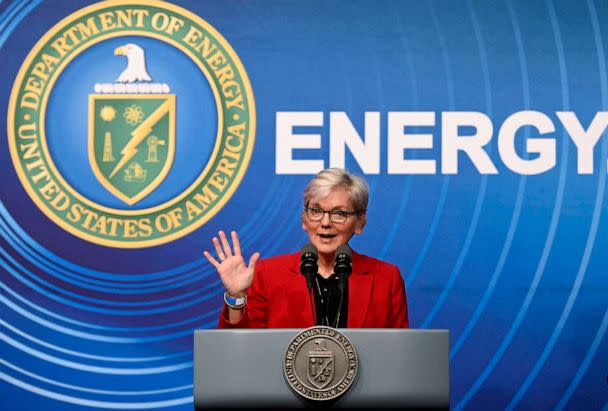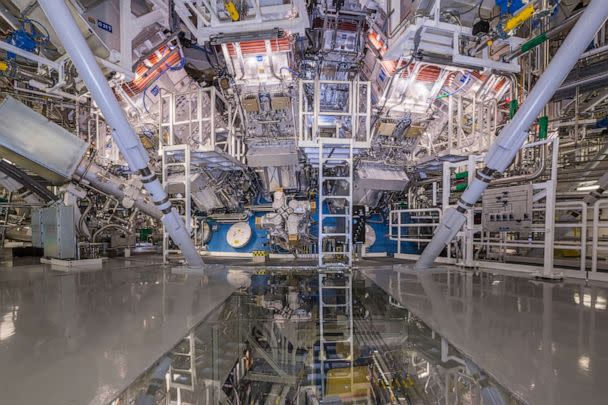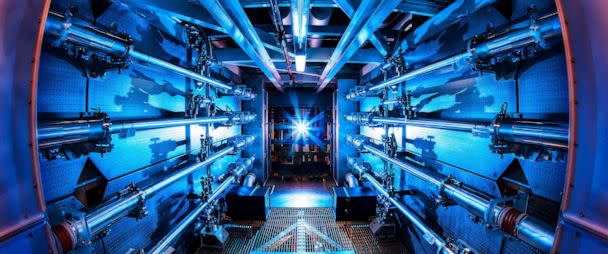Scientific 'breakthrough' in nuclear fusion could launch new era of clean energy
The Department of Energy on Tuesday announced a scientific breakthrough in nuclear fusion at a national lab in California, marking a major step toward developing a new, sustainable form of energy that releases virtually no carbon dioxide or other types of air pollution.
Scientists at the Lawrence Livermore National Laboratory in California successfully generated a fusion reaction between two hydrogen atoms and maintained that reaction in a controlled setting, marking the potential to use such reactions to generate huge amounts of energy without burning fuels.
The announcement could mark a major step in creating a form of energy that would not release the gases that are warming the planet and contributing to climate change, but is still decades away from being ready for large-scale application.

"This is a great day," Energy Secretary Jennifer Granholm said at a Washington news conference, adding that the achievement "will go down in the history books."
“Today, we tell the world that America has achieved a tremendous scientific breakthrough ... we invested in our national labs and we invested in fundamental research, and tomorrow will continue for a future that is powered, in part by fusion energy,” she said.
The announcement Tuesday is an idea frequently represented in science fiction coming to life, said Paul Dabbar, a distinguished visiting fellow at Columbia University and former Department of Energy undersecretary for science, who oversaw the national labs in his role at the department. He said fusion power has been featured in films like "Star Trek: Into Darkness," which filmed at the lab announcing the new development, and "Iron Man" who uses a form of fusion power in the Arc Reactor that keeps him alive.
"What was just accomplished was a goal of science that can hopefully lead to having the ultimate power source, nature's power source, on Earth, which is a contained fusion reaction," Dabbar told ABC News.

Dabbar said nuclear fusion is essentially harnessing the power of the sun, or at least the same power that creates stars. He said the basic physics of the reaction has been understood for decades but scientists haven't been able to keep the reaction going because it requires a tremendous amount of heat and pressure to maintain.
"If we could bring a star down to earth, right. You've got a bunch of stars, basically controlled stars in buildings around the Earth. And we're taking the most abundant element in the universe and converted into energy, just like the sun but in boxes here. And no environmental impact and we have literally unlimited energy based on the amount of hydrogen there is," he said.

Dabbar said that while generating and controlling this reaction was the hardest step, there's still a lot of work to do to figure out how to contain and maintain it outside a lab setting, including designing a power plant that can handle that amount of heat and energy created by the reaction and still last at least 10 or 20 years.
But he said the advantages are huge. A fusion power plant could produce a lot of power from one facility and would emit no carbon, no air pollution, and generate very little waste compared to the nuclear power plants in use today. It's also fueled by hydrogen, which is incredibly abundant.
"It literally has all the advantages of many of the alternatives it with none of the disadvantages of all the alternatives. And so it could be you know, if a power plant can be made it would be incredibly positive," Dabbar said.
This is a developing story. Please check back for updates.
Scientific 'breakthrough' in nuclear fusion could launch new era of clean energy originally appeared on abcnews.go.com
